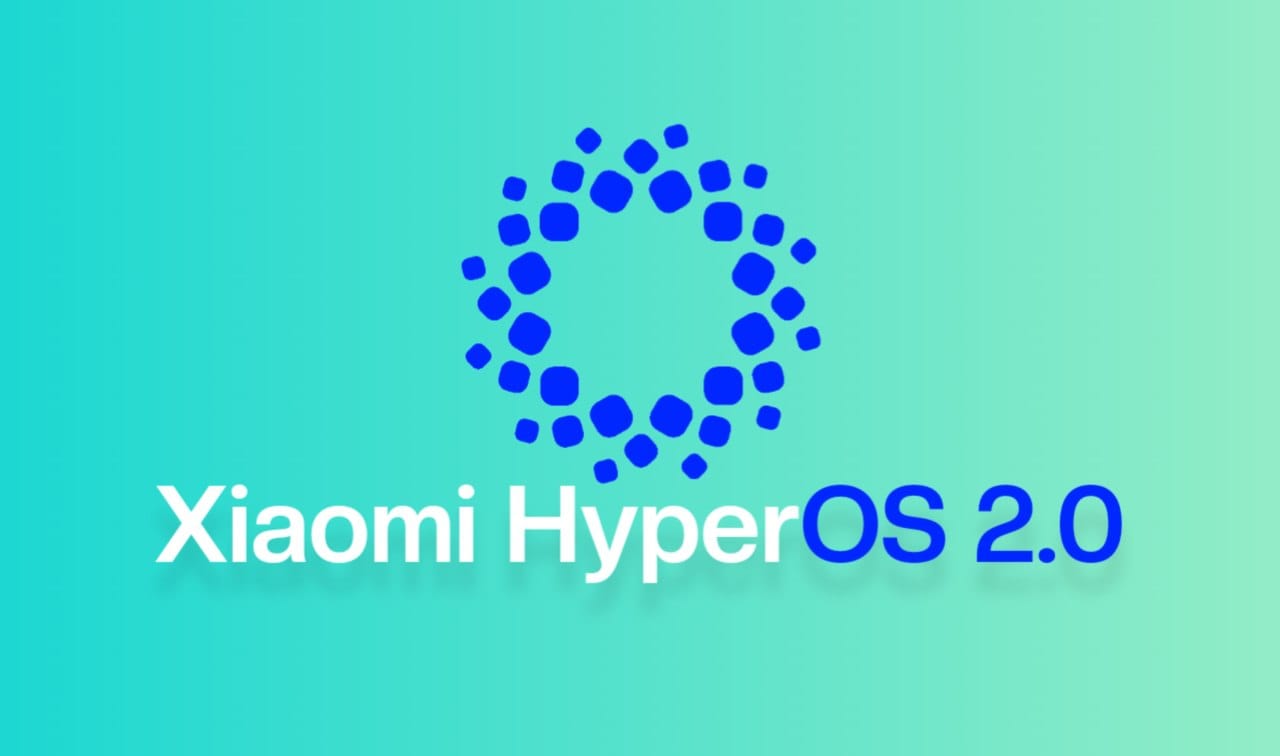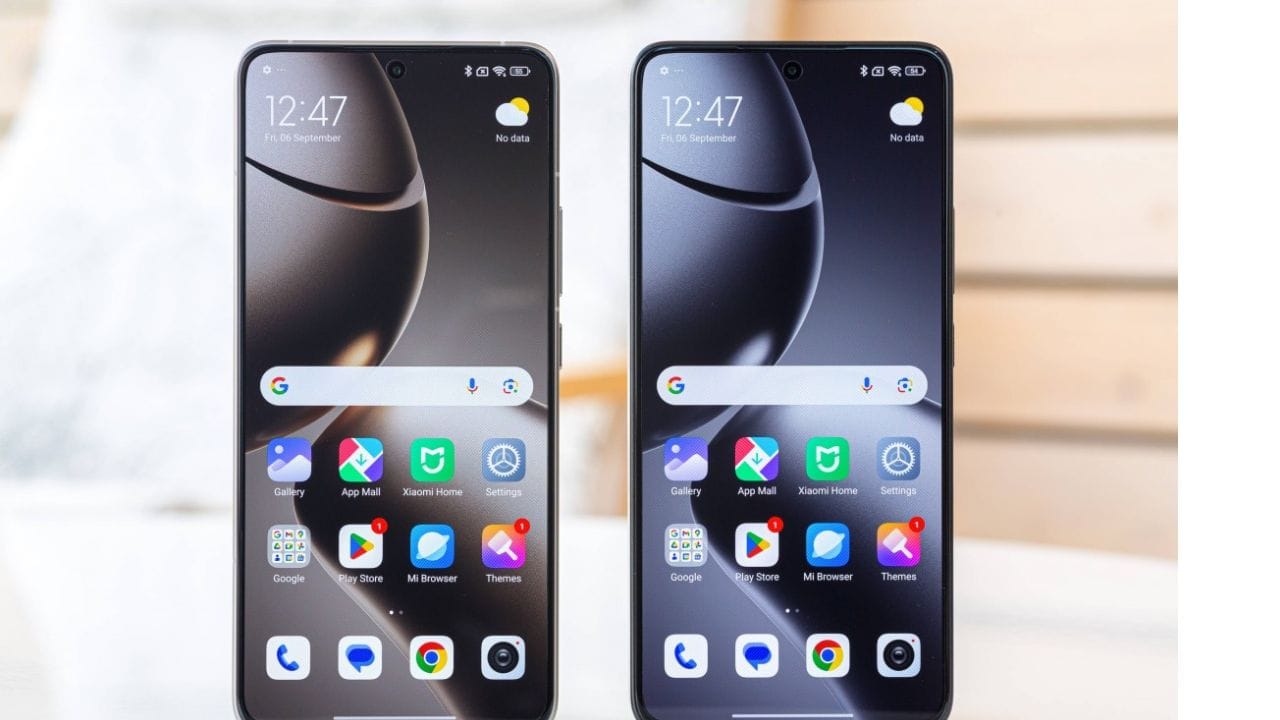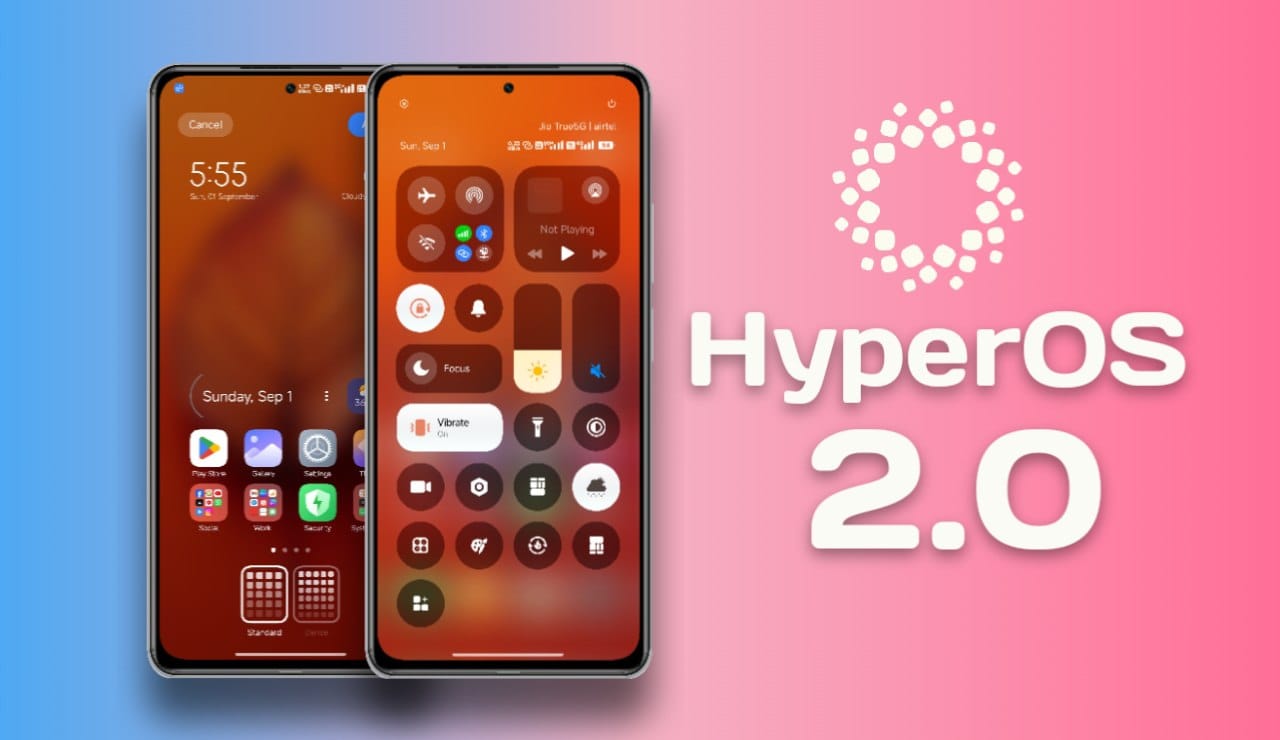Xiaomi
List of Xiaomi, Redmi, and POCO Devices That Will Receive HyperOS 2.0 Update

Xiaomi is currently testing their upcoming HyperOS 2.0 operating system in beta stages in China on various flagship devices. Lots of Xiaomi, Redmi, and POCO users wants to know whether their device is eligible for the upcoming HyperOS 2.0 update or not.
Well, we will share with you the list of Xiaomi, Redmi, and POCO devices that are eligible for the HyperOS 2.0 update. Also, this list is based on the software update policy of Xiaomi devices and currently the tech giant has not released any official information on HyperOS 2.0 devices list.
The official list will be available on the launch date of upcoming Xiaomi 15 Series where they will unveil their HyperOS 2.0 operating system based on Android 15 version.
HyperOS 2.0 Xiaomi Devices List
These below-mentioned Xiaomi devices are eligible for the HyperOS 2.0 update:
- Xiaomi Mi 11
- Xiaomi Mi 11 Pro/Xiaomi Mi 11 Ultra
- Xiaomi 11T Pro
- Xiaomi 11T
- Xiaomi Mi 11 LE/Xiaomi 11 Lite 5G NE
- Xiaomi 12 Pro
- Xiaomi 12
- Xiaomi 12S Ultra
- Xiaomi MIX FOLD 2
- Xiaomi 12 Lite
- Xiaomi Civi 1S
- Xiaomi 12S
- Xiaomi 12T Pro
- Xiaomi 12S Pro
- Xiaomi Pad 5 Pro 12.4
- Xiaomi Redmi Pad
- Xiaomi 12T
- Xiaomi 13 Lite/Xiaomi Civi 2
- Xiaomi 12 Pro Dimensity Edition
- Xiaomi 13 Pro
- Xiaomi 13
- Xiaomi 13 Ultra
- Xiaomi 14
- Xiaomi 14 Pro
- Xiaomi 14 Ultra
- Xiaomi 13T Pro
- Xiaomi 13T
- Xiaomi Pad 6
- Xiaomi Pad 6 Pro
- Xiaomi Civi 3
- Xiaomi Pad 6 Max 14
- Xiaomi Mix Fold 3
- Xiaomi MIX FLIP
- Xiaomi MIX FOLD 4
- Xiaomi 14 CIVI/Xiaomi Civi 4 Pro
- Xiaomi Pad 6S Pro 12.4
HyperOS 2.0 Redmi Devices List
These below-mentioned Redmi devices will surely get HyperOS 2.0 update:
- Redmi K50 Gaming
- Redmi K50
- Redmi K50 Pro
- Redmi K50 Ultra
- Redmi Note 12 Pro/Redmi Note 12 Pro+/Redmi Note 12 Explorer (Discovery)
- Redmi Note 12R Pro/Redmi Note 12
- Redmi 11 Prime
- Redmi K50i/Redmi K50i Pro/Redmi Note 11T Pro/Redmi Note 11T Pro+
- Redmi Note 12 Pro Speed Edition
- Redmi 12C
- Redmi K60E
- Redmi K60 Pro
- Redmi K60
- Redmi Note 12 NFC 4G
- Redmi 11 Prime 5G/Redmi 10 5G/Redmi 10 Prime+ 5G/Redmi Note 11E
- Redmi Note 11R
- Redmi Note 12 Turbo
- Redmi Note 12 4G
- Redmi Note 12S
- Redmi Note 13 Pro
- Redmi Note 13 Pro+
- Redmi Note 13R Pro/Redmi Note 13 5G
- Redmi K70 Pro
- Redmi K70E
- Redmi K70
- Redmi 13R/Redmi 13C 5G
- Redmi K60 Ultra
- Redmi Note 13 4G
- Redmi Note 13 4G NFC
- Redmi 12 5G/Redmi Note 12R
- Redmi 12
- Redmi Note 13 Pro 4G
- Redmi Turbo 3
- Redmi 13 5G/Redmi Note 13R
- Redmi 13
- Redmi Pad Pro 5G
- Redmi Pad Pro
HyperOS 2.0 POCO Devices List
These below-mentioned POCO devices will get HyperOS 2.0 update.
- POCO F4 GT
- POCO F4 Pro
- POCO M5
- POCO X4 GT Pro/POCO X4 GT
- POCO X5 Pro 5G
- POCO C55
- POCO F5 Pro
- POCO X5 5G
- POCO M4 5G
- POCO F5 5G
- POCO X6 5G
- POCO X6 Neo
- POCO X6 Pro
- POCO F6 Pro
- POCO M6 Pro
- POCO M6 Pro 4G
- POCO F6
- POCO M6 Plus 5G
- POCO M6
- POCO Pad
So, these Xiaomi,Redmi, and POCO devices user can expect HyperOS 2.0 Android 15 update on their devices. HyperOS 2.0 will significantly improve the user experience along with stability and fluidity of the system. Which Xiaomi phone are you using currently? Let us know in the comments below.
Also, check out our latest video on YouTube which will tell you Xiaomi HyperOS 2.0 confirmed features.
News
Xiaomi Ends HyperOS 2 Development, Shifts Focus to HyperOS 3 and Ends Support for 9 Phones

Xiaomi has officially ended development for HyperOS 2 and is now fully focused on building HyperOS 3, according to a user report from Xiaomi’s Feedback app.
Goodbye HyperOS 2, Hello HyperOS 3
All eligible Xiaomi devices have already received the HyperOS 2 update, and the company has confirmed there will be no further improvement updates for it. Instead, Xiaomi’s development team is now working hard to ensure that HyperOS 3, based on Android 16, is ready on time.
Although Xiaomi hasn’t shared a launch date yet, the upcoming OS may be called HyperOS 26, to match the release year (2026).
What to Expect from HyperOS 3
Xiaomi says HyperOS 3 will bring several improvements, including:
- Smoother animations
- Better system responsiveness
- Refreshed user interface (UI)
- An overall improved user experience
However, many of these enhancements sound a bit general, and more details are expected in the coming months.
Nine Phones Losing Support
As Xiaomi moves forward, it’s also ending software support for nine older devices, which will receive their last security patch in September 2025:
- Redmi A1
- Redmi A1+
- Poco C50
- Xiaomi 11T
- Xiaomi 11T Pro
- Mi 11 Lite 5G NE
- Mi 11 LE
- Poco M5
- Redmi 11 Prime 4G
After this final update, these phones will no longer receive official security or system updates.
News
Xiaomi Announces Bug Fixes for HyperOS 2 on Flagship Phones

Xiaomi has officially shared details about recent bug fixes for its latest operating system, HyperOS 2. These updates aim to improve the experience for users of flagship smartphones like the Xiaomi 15 Pro and Xiaomi 13 Ultra. The announcement was made on April 4 through the Xiaomi Community.
HyperOS 2 Problems That Are Now Fixed:
Xiaomi’s new update fixes several important issues that users have reported:
- Volume Control Alignment: The volume bar that didn’t align properly when opening the control center is now fixed, making the interface smoother.
- Battery Drain with Mi Band 9: Users of Xiaomi 15 and 15 Pro who had battery issues while connected to Mi Band 9 should now see better battery life.
- Calculator Input Problem: You can now edit and change numbers in the calculator app, something users couldn’t do earlier.
- Audio Fix for WeChat: The weird metallic sound during WeChat recordings has been removed.
- Theme Section Cleanup: Duplicate themes without borders were showing up on the Xiaomi 13 Ultra. These have now been merged to make things clearer.
Issues Xiaomi is Still Working On:
Xiaomi also said that it is working hard to fix other problems that some users are still facing, including:
- Screen freezing or going black when changing certain developer settings.
- High power usage on the desktop in the Redmi K70 Ultra.
- Problems with Always-On Display (AOD) and shortcut icons on the lock screen.
- Volume control layout appearing incorrectly on some screens.
- A bug with the smart unsubscribe feature for sports updates.
Xiaomi’s Message to Users
A Xiaomi spokesperson said, “We are listening carefully to our users and focusing on solving the issues that affect daily use the most. These are just the first of many improvements coming to HyperOS.”
What This Means for Xiaomi Users
These updates show Xiaomi’s commitment to improving HyperOS 2, which is its most advanced software yet. The goal of HyperOS is to create a smooth and unified experience across phones, tablets, and other Xiaomi devices.
If you use any of the affected phones, make sure to check for software updates so you can get these fixes as soon as they’re available in your region.
Xiaomi
Poco X7 with IP69 Rating Announced, X7 Pro Cameras Break Cover

The Poco X7 is launching on January 9 with top-tier features, including IP68 and IP69 ratings for water and dust resistance. This information was confirmed by Flipkart, an Indian online retailer, through promo pages for the Poco X7 and X7 Pro.
The Poco X7 will sport a 1.5K 3D curved AMOLED display with a 120Hz adaptive refresh rate and an impressive peak brightness of 3000 nits. The screen is protected by Gorilla Glass Victus 2 and supports Dolby Vision and HDR10+. A fingerprint scanner is embedded under the display for easy biometric authentication.

Flipkart also shared details about the Poco X7 Pro’s cameras. It features: A 50MP primary camera with the Sony LYT 600 sensor and Optical Image Stabilization (OIS), an 8MP ultrawide camera for wide-angle shots,a 20MP selfie camera for crisp photos. The Pro model will also support 4K video recording at 60 FPS with both OIS and EIS. A special Director Mode will let users create cinematic videos.
The Poco X7 Pro will pack a Dimensity 8400 Ultra SoC, LPDDR5X RAM, and UFS 4.0 storage. It also includes HyperOS 2 for a seamless user experience, 90W fast charging, and a massive 6000 mAh battery (increased to 6550 mAh for the Indian market).
The Poco X7 Pro will have a base price of under INR 30000 ($350/€340), making it a competitive option in its segment. Poco will also launch a special Poco X7 Pro Iron Man Edition next Thursday.










